Reviving Land, Inspiring Change.
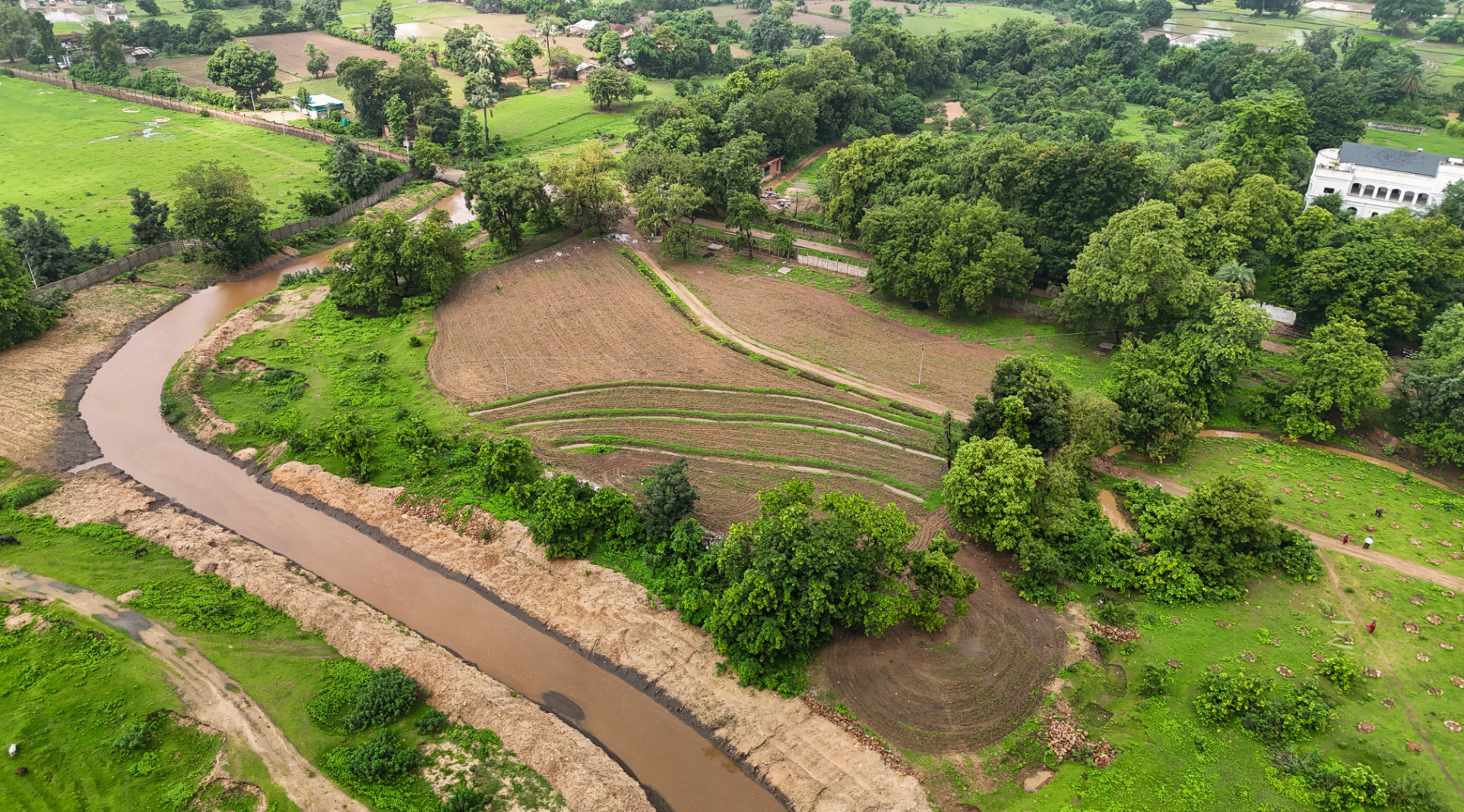
Swarna Bhooma Kathiwada Permaco, Zone 5, Kathiwada 2034
We have designed and developed 10 acres of land near the palace and the river into a sustainable and regenerative permaculture site. Our goal is to transform barren land into a resilient and ecologically balanced ecosystem through the use of permaculture principles. By doing so, the land will yield year-round food supply for the community, demonstrate the restoration of an ecosystem, practice sustainable water management and engage the broader community through knowledge-sharing initiatives.
What is permaculture?
Permaculture is a design approach rooted in nature’s principles to create systems that are sustainable, regenerative, and self-sufficient.
Guided by three core ethics—care for the earth, care for people, and fair share—it emphasizes working in harmony with natural ecosystems.
Its design principles include observing and understanding the environment, capturing and storing resources like water and energy, and creating systems that yield benefits while minimizing waste.
Permaculture values diversity, integration, and resilience, encouraging small, incremental solutions and the creative use of change.
By mimicking nature’s patterns, permaculture fosters balance and productivity, meeting human needs while restoring the health of the planet for future generations.
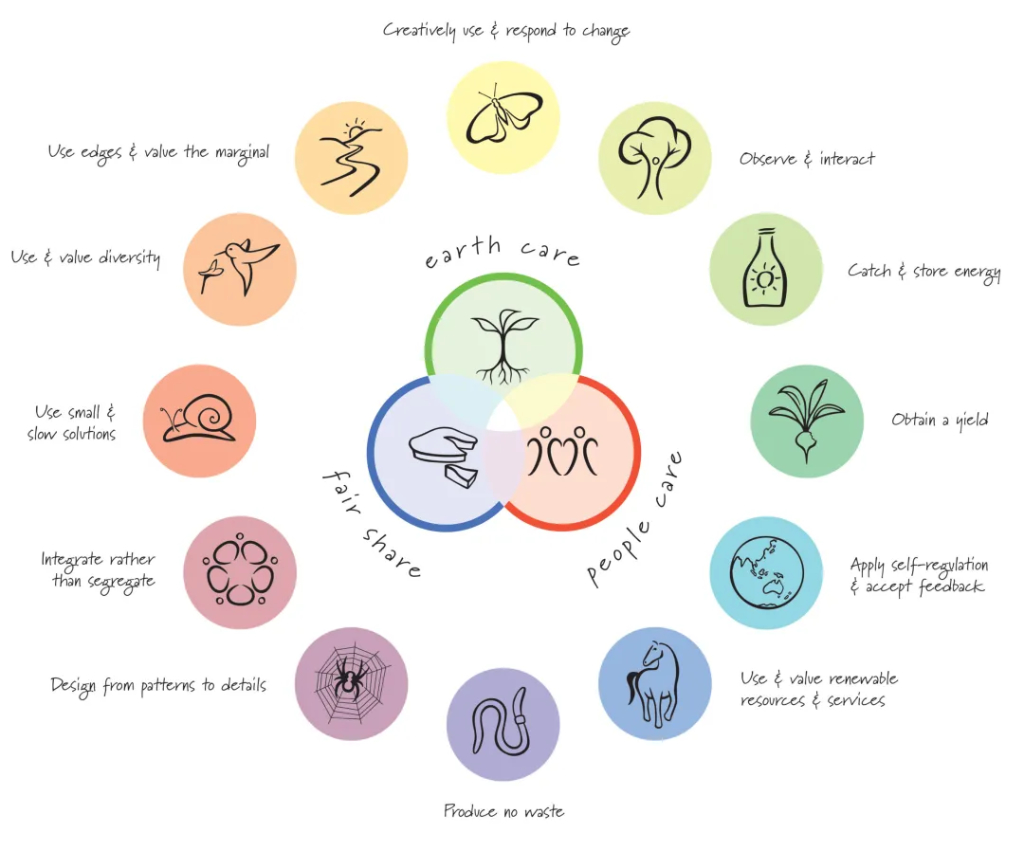
Research, Site Assessment and Sector Analysis
Our research revealed the following features of the land and environment:
Soil – Predominantly medium black soil, a mix of black clay and sandy, red loam formed from sandstone and basalt rocks north of the site. The soil requires organic enhancements to improve its fertility. The top soil is highly susceptible to erosion, particularly on slopes necessitating contour planting and cover crops to stabilize the soil.
Water – We identified natural drainage, water flow and mapped low-lying areas for rainwater capture and erosion control.
Climate – We observed wind patterns and sun exposure to shape planting strategies and design windbreaks. We determined that the southern area of the land is ideal for planting crops.
Wildlife and Vegetation – We surveyed the area identifying native species to protect and invasive species to manage.
A comprehensive sector analysis incorporated these insights guiding placement based on wind, sunlight and water flow. Keeping energy needs in mind, we mapped activity zones accordingly into living areas, kitchen gardens, orchards, crops, managed forests and wild zones.
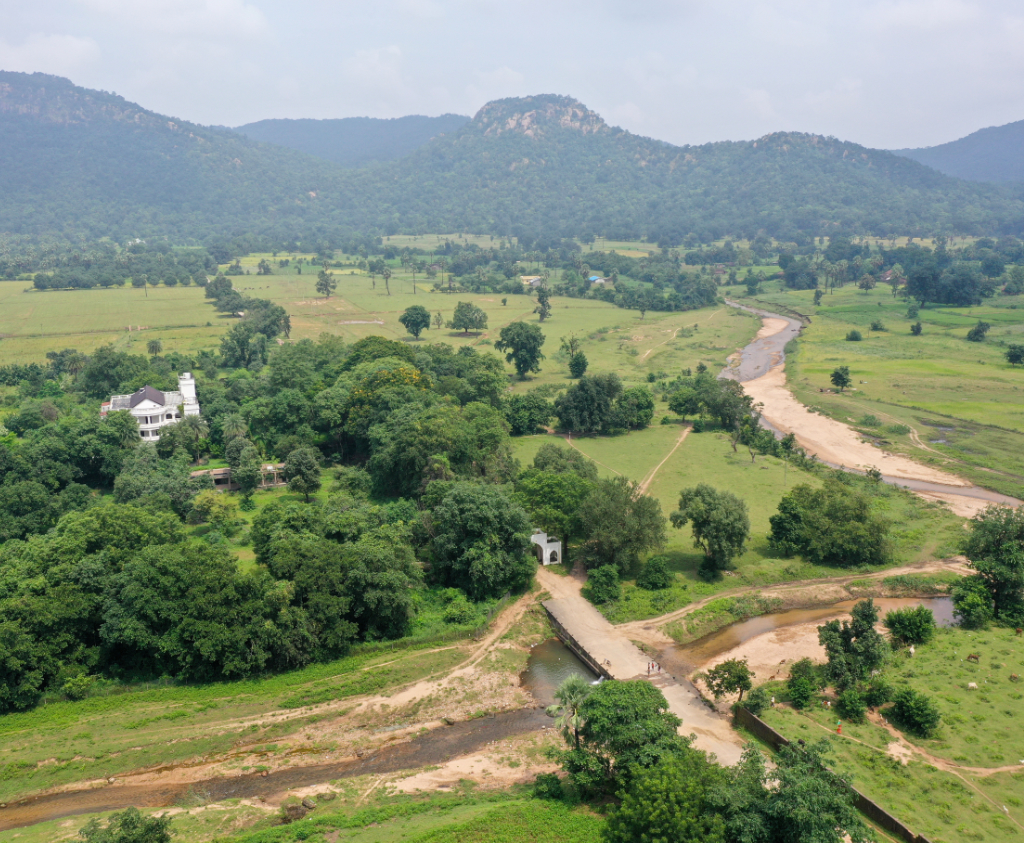
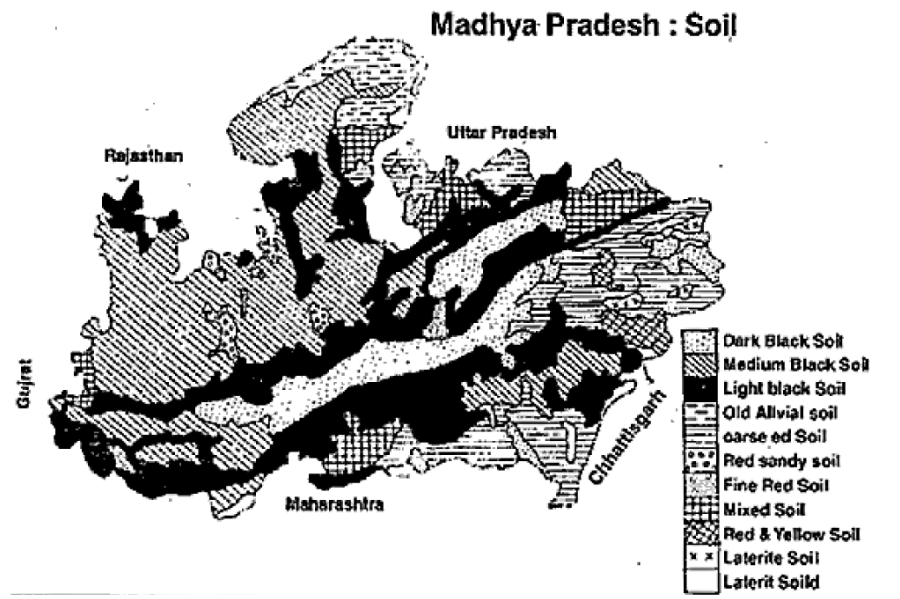
The soil decides the agriculture of any area. As seen in the chart above, Kathiwada has Medium Black Soil. To understand why, we carried out an in-depth research and study.
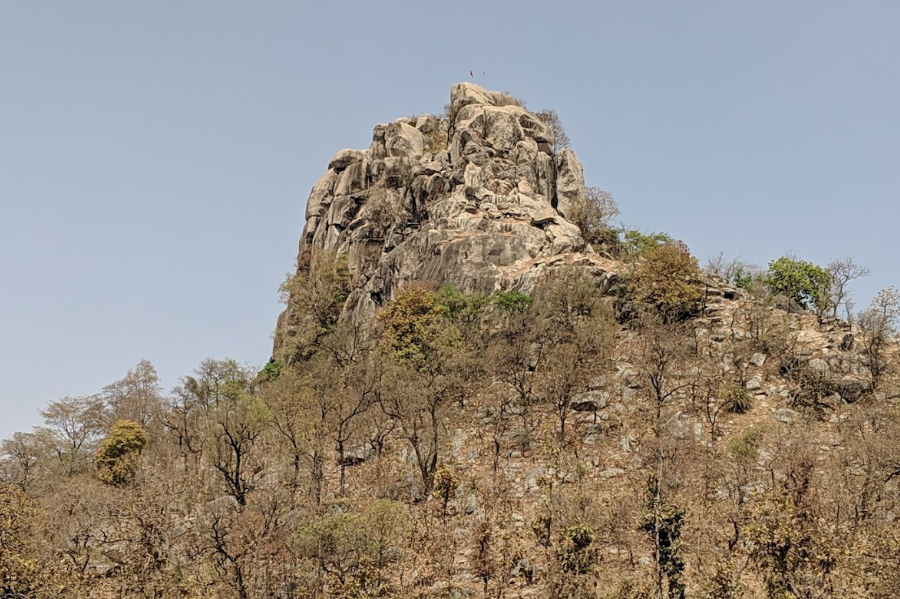
We found that the Sandstone hills, to the north of this site, surrounded by Ratanmal Forest, have Basalt (parent rock) and Granite rocks, give black clay and red sand soil. We conducted soil tests of various zones, witnessing differences in texture, organic matter, and pH levels. We identified areas with compacted soil that needed improvement and fertile spots ideal for crop production.
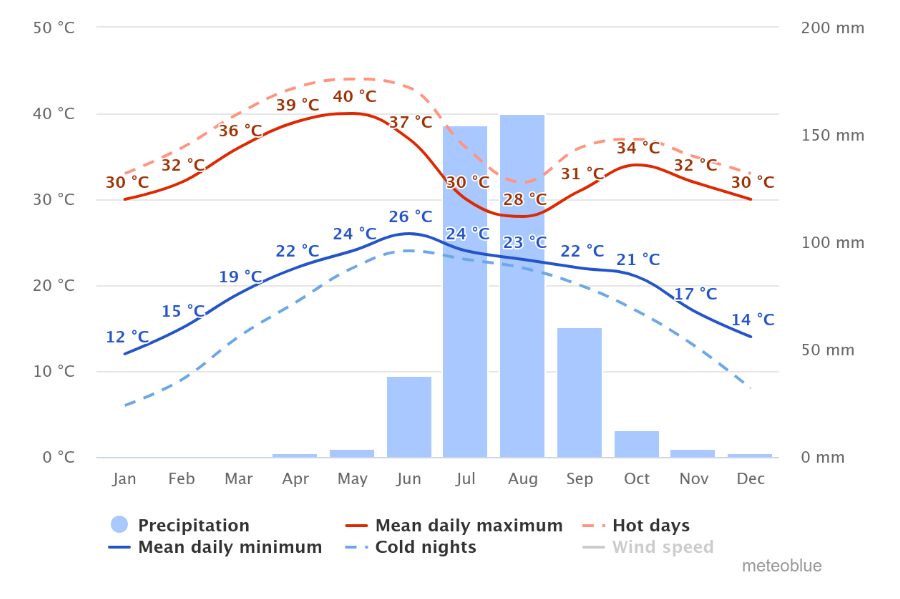
The site receives a significant amount of precipitation in both June and September.
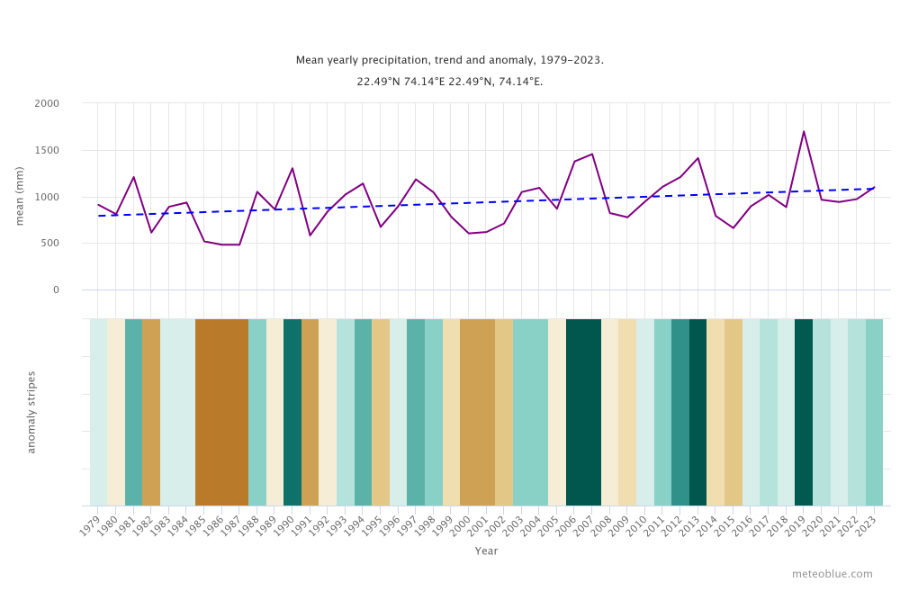
Based on data and conversations with locals, there is heavy rainfall once every 4-5 years leading to excessive soil erosion.
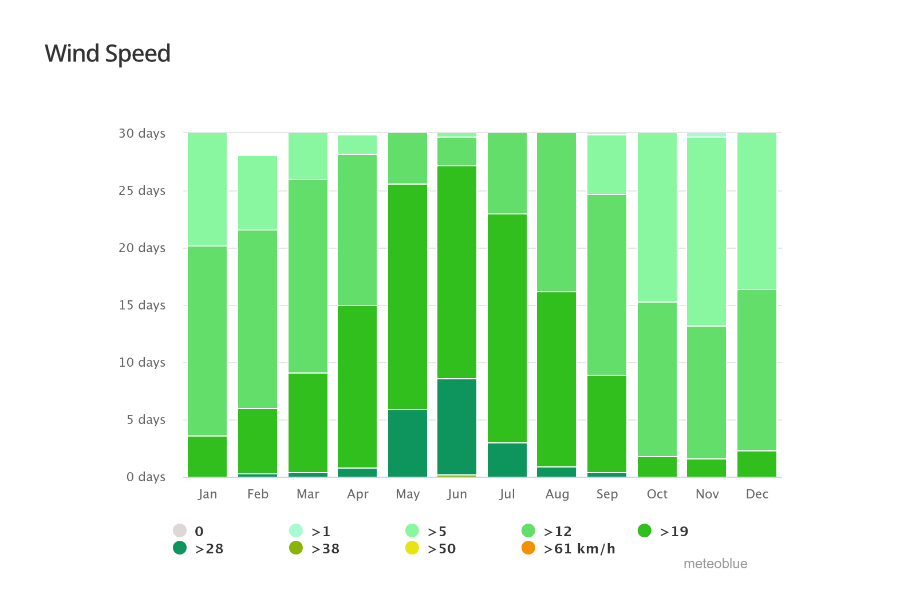
The wind speed and direction graph show that prominent summer wind blows from the SW direction and Winter wind from the NE direction.Furthermore, the existing trees’ shape proves that there is heavy turbulence present which makes the storm stronger. This information helped us in planning our windbreak plantation.
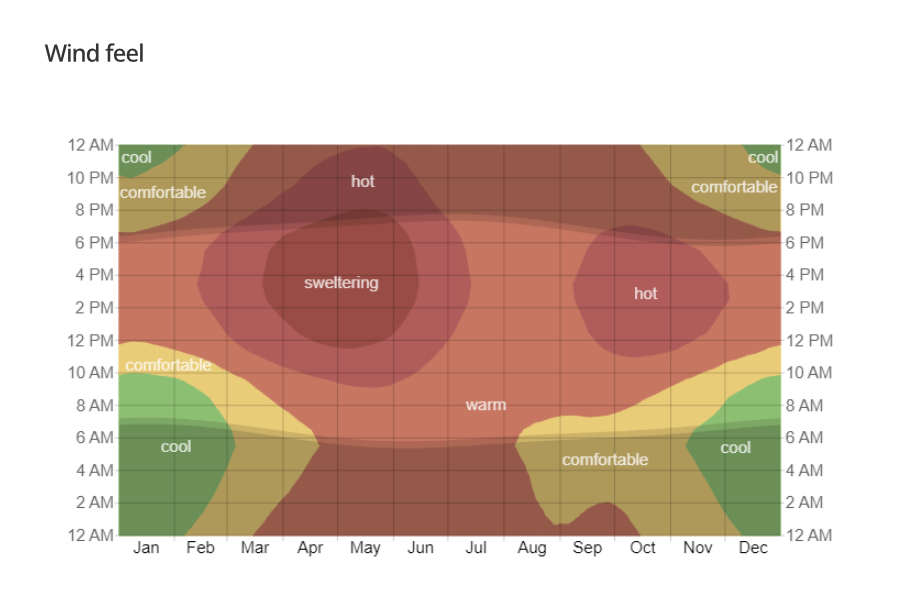
This site has a comfortable feel from August to February yet afternoons can be harsh, which can be utilized for indoor activities like Permaculture workshops, Training and Touristic Goals. The last chart can be used for solar panel planning.
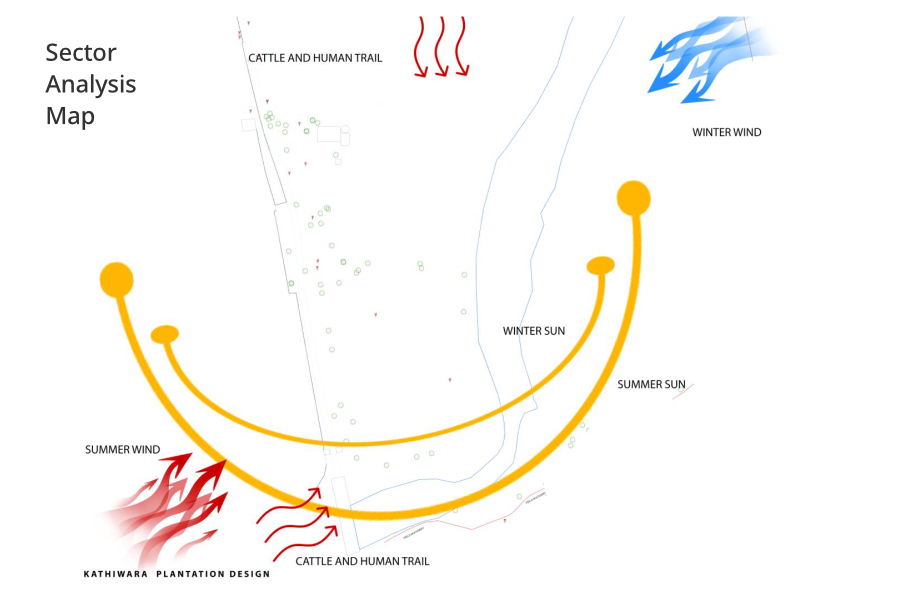
A sector map gives us data regarding wind; pollution, sun exposure, wildlife paths, and any other details which are useful for planning.
Here are our key findings from the sector map:
- We have a river stream in the S-E direction and a mountain view towards East-North-West which gives a beautiful view and feel.
- During heavy rain events the river creates severe flash flood situations in the Southern area, along with water it leaves organic matter and sand. To protect this land and stop soil erosion we can plant a dense forest of water-loving species.
- The land gets Summer hot wind from the South-west direction so it is good to have a dense windbreak here.
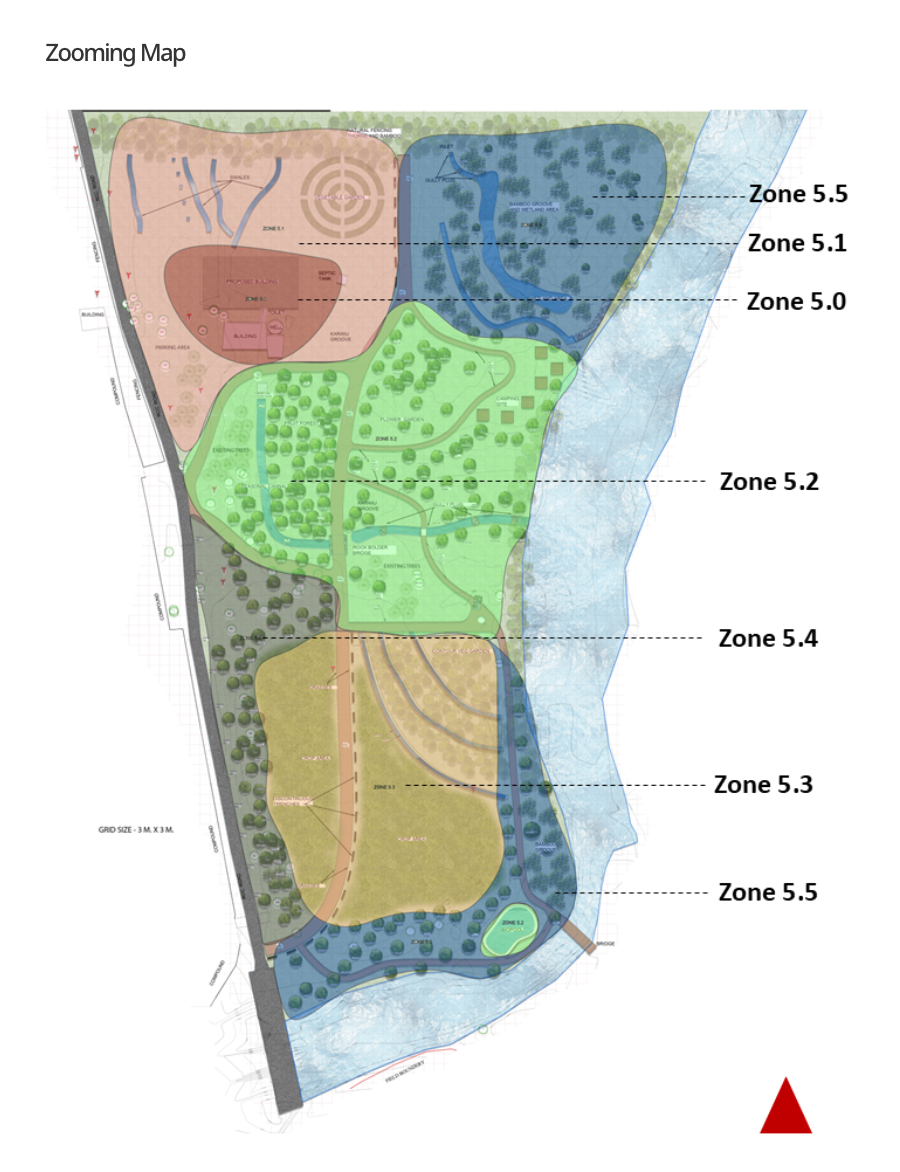
Based on our findings and analysis, we demarcated the site into the following permaculture zones.
Zone 0 (Red)
Living quarters and classrooms.
Zone 1 (Pink)
Designed for easy and frequent access, this zone includes a Kitchen garden, herb beds, and a composting system.
Zone 2 (Green)
This area hosts our orchard, perennial vegetables, and small livestock pens (e.g., chickens and ducks).
Zone 3 (Orange)
We designated this area for larger crops, such as grains, beans, and pumpkins, which need less daily attention.
Zone 4 (Grey)
This space serves as a managed forest for firewood, timber, and additional wildlife habitat.
Zone 5 (Blue)
The wildest part of our farm, Zone 5, is left mostly undisturbed, supporting local wildlife and contributing to natural ecosystem services.
We conducted a sector analysis that mapped external factors, such as prevailing winds, sun paths, and water flow, to position each zone in harmony with natural energy flows.
Transforming Kathiwada, A Living Model of Sustainability.
Our concept map incorporates the mapped zones with the strategies we needed to enact through permaculture principles to achieve our goals.
The final layout is a thoughtful consideration of every element that supports the overall system creating a balance between productivity and ecological health.
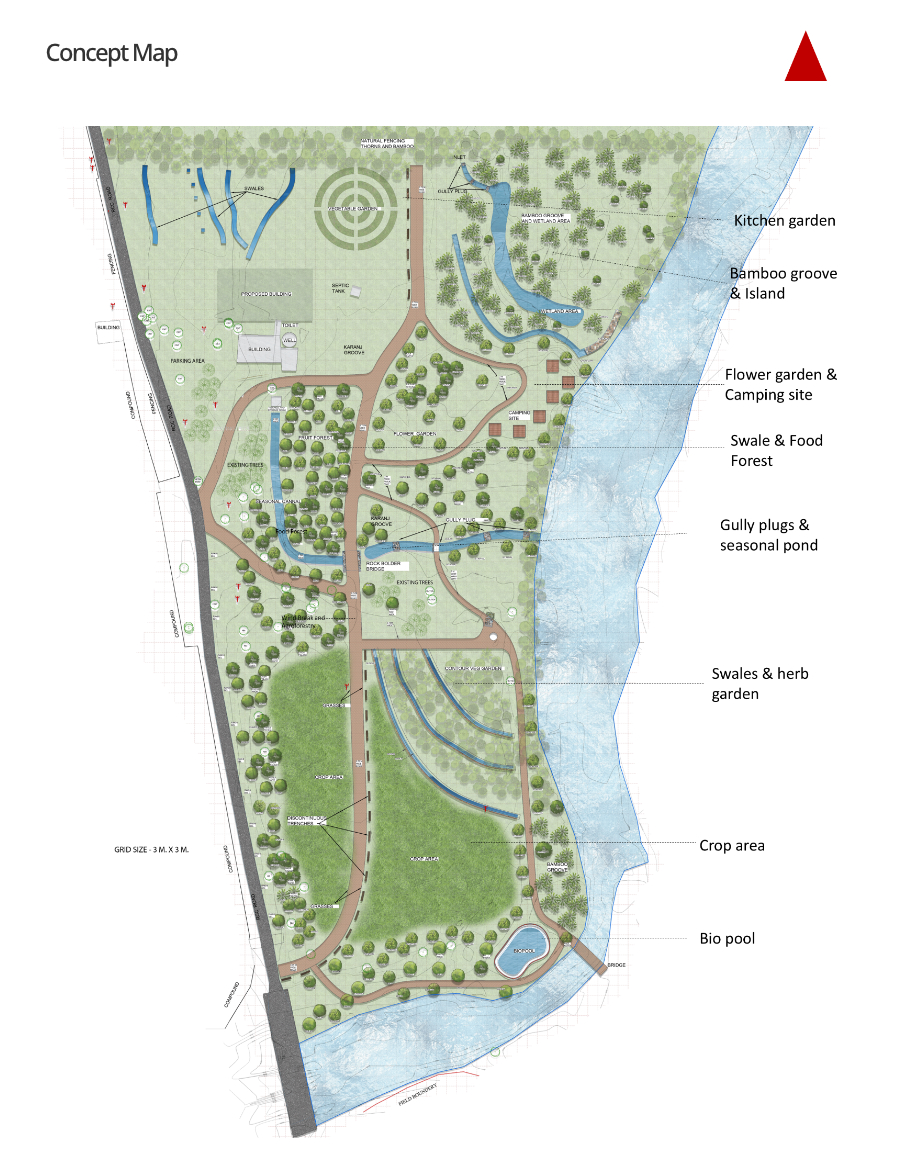
Our approach and efforts to breathe life back into the land.
We are implementing the following strategies to prove that degraded land can be made fertile and beautiful again. The outcomes give us hope for a ripple effect that could transform the region’s agriculture future.
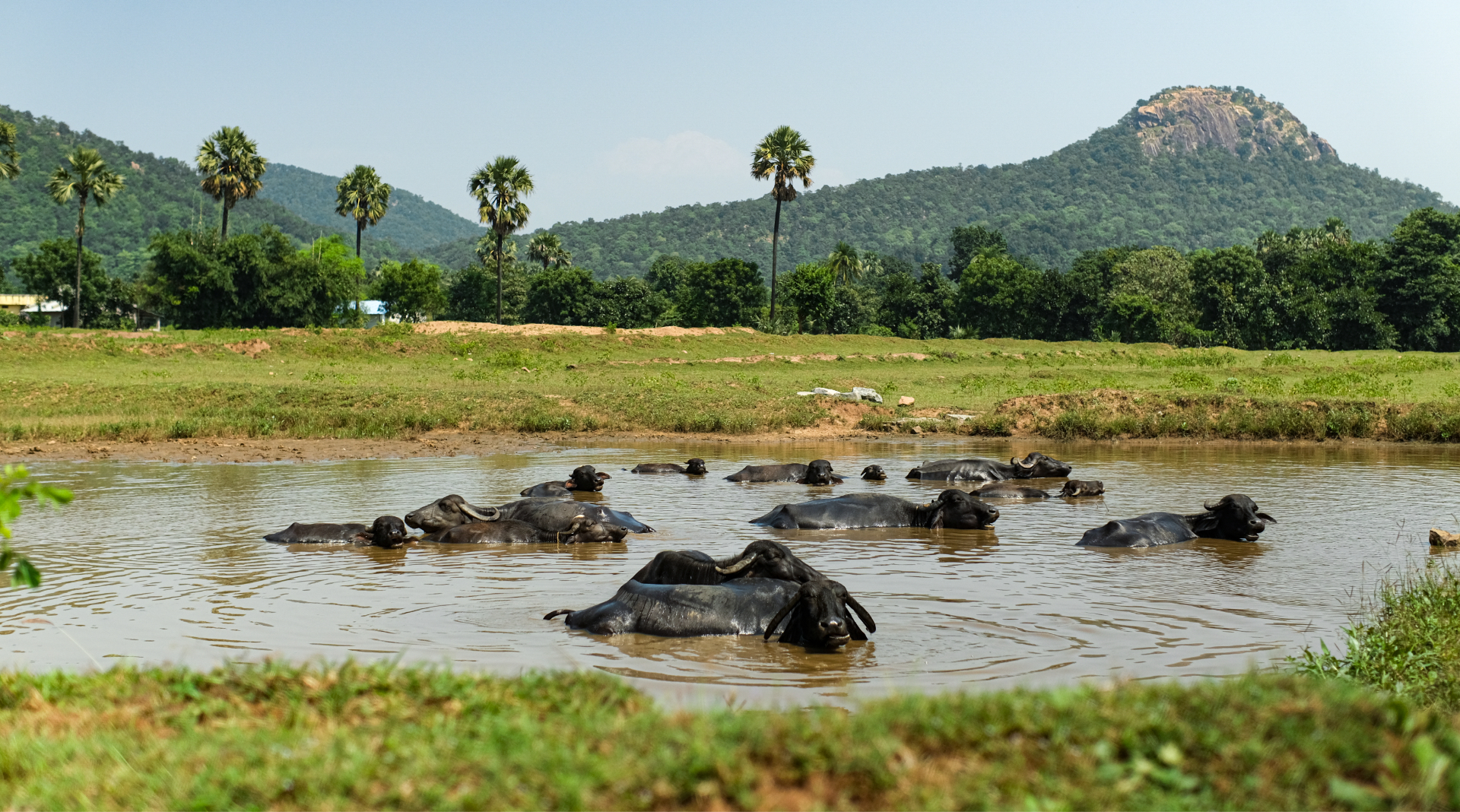
Innovative Water Management
We’ve constructed swales, ponds, gully plugs and rainwater harvesting systems to capture every drop and recharge groundwater. We implemented erosion control measures including planting bamboo.
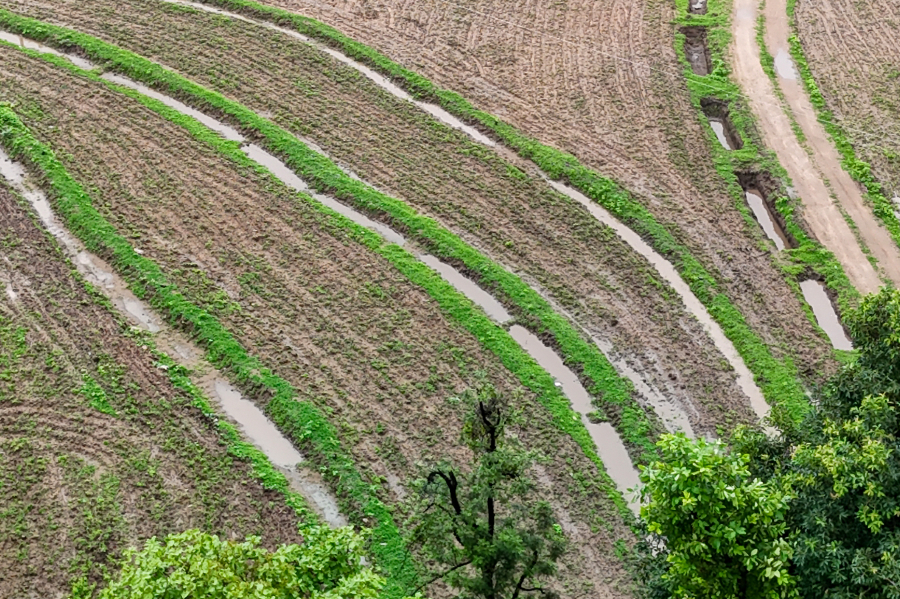
Swales: We constructed swales along the contours of our land to slow down water runoff, allowing it to sink into the soil and recharge groundwater.
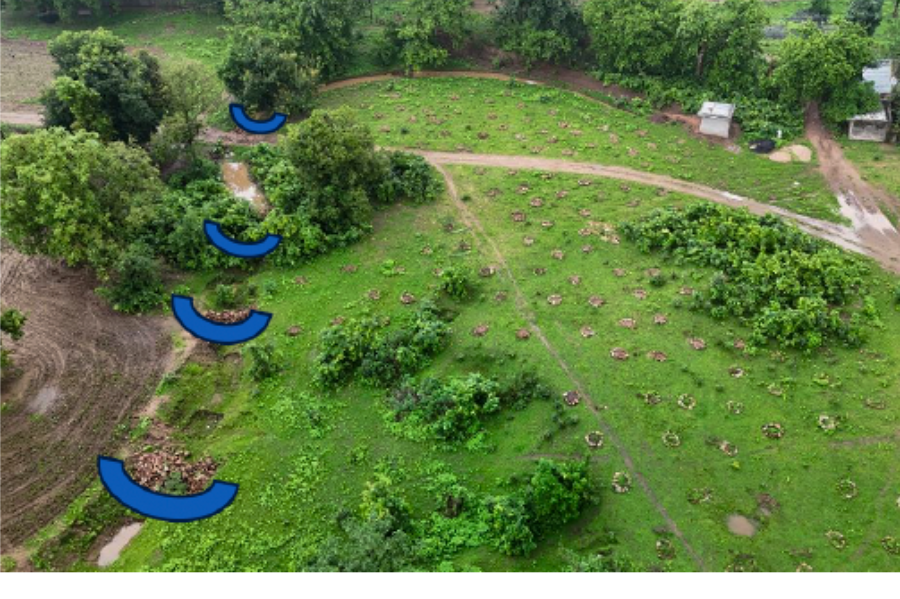
Gully Plugs: There are small dams built across streams, drainage ditches, or swales to prevent erosion and to settle pollutants and sediments.
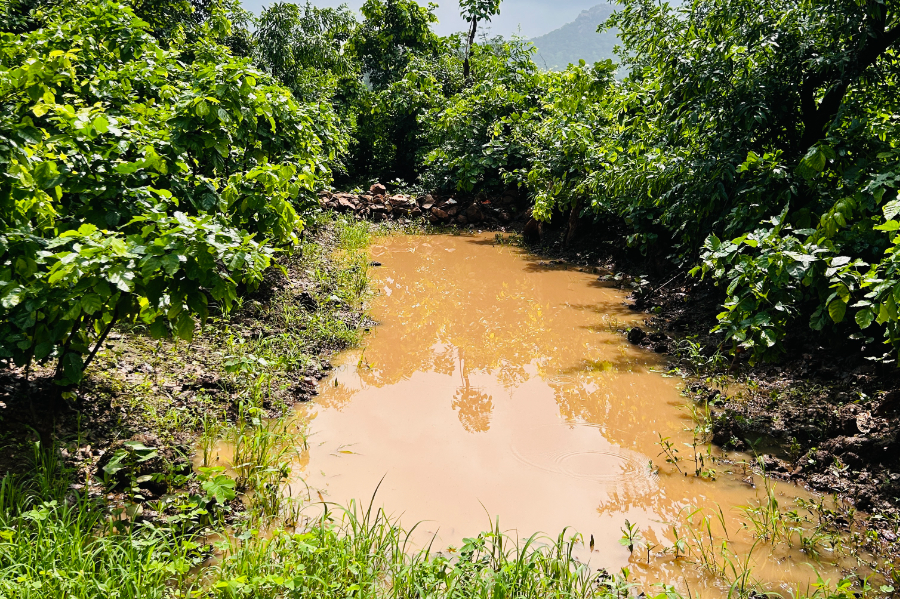
Rainwater Harvesting: Store water in soil and trees is a useful way in natural systems as they release water during the dry season. Also, we can install rainwater catchment systems on rooftops, directing the collected water into storage tanks.
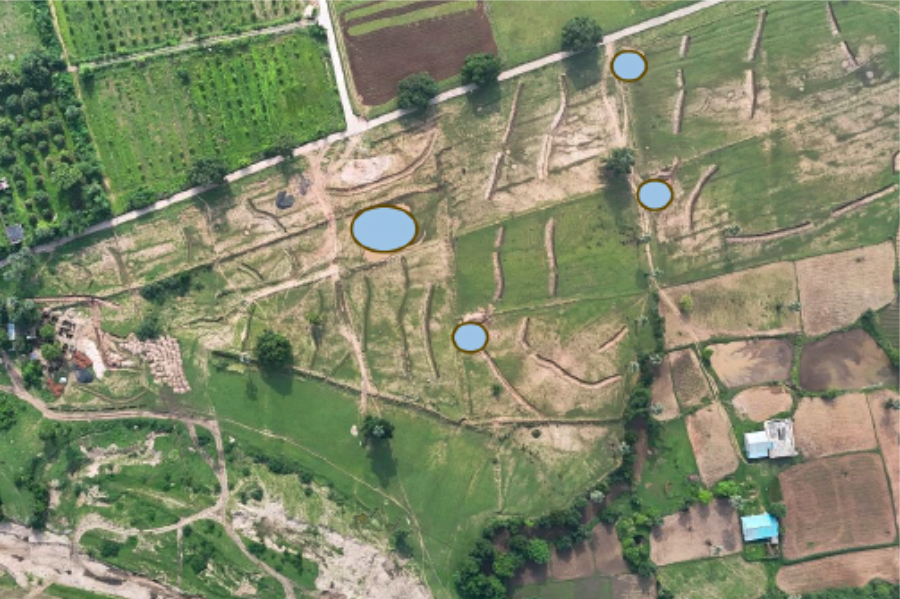
Pond Construction: We created percolation ponds along with trenches in a low-lying area of our land’s Zone 04 that naturally collects water, soil and manure/leaf litter. These attract local wildlife and increase the water table.
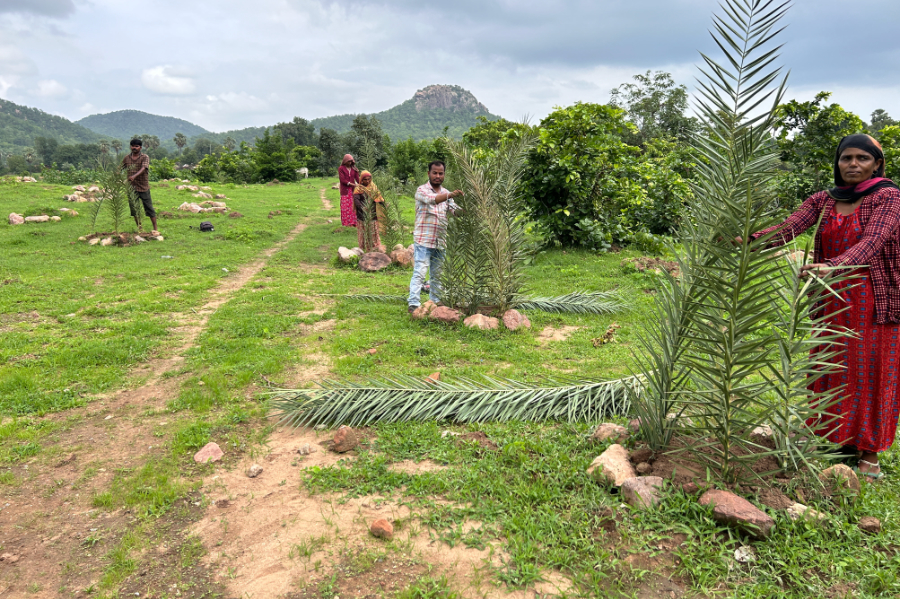
Tree Plantation: The local community and tribal members of the region participating in the plantation drive organised by us.
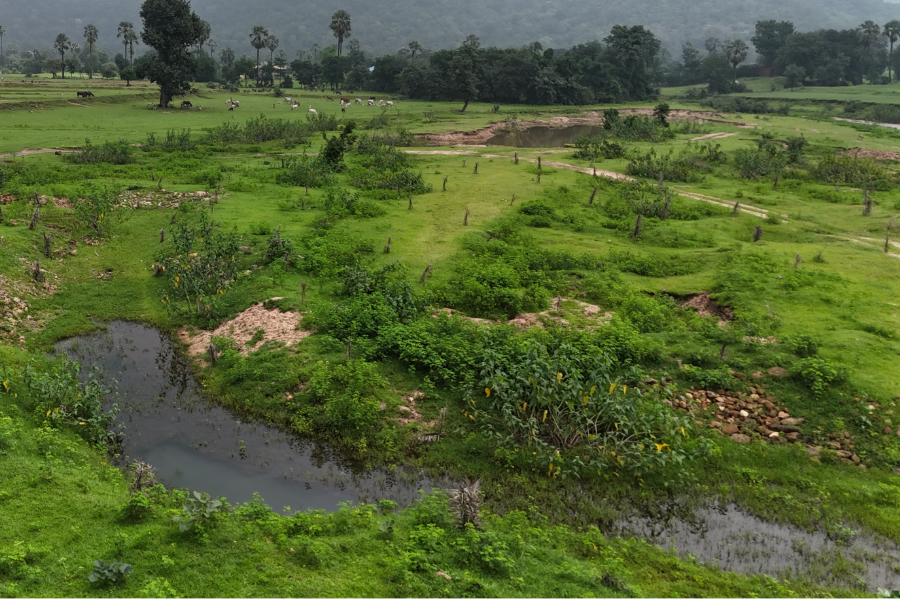
Bamboo Groove with stone pitching: We reclaimed heavily eroded river banks by installing gully plugs, stone pitching on slopes and plantation of Bamboo plants, which will create natural ponds.
Soil Revitalization
Strategies include support species plantation, mulching, composting, minimal tillage. These have already begun to revitalize the land.
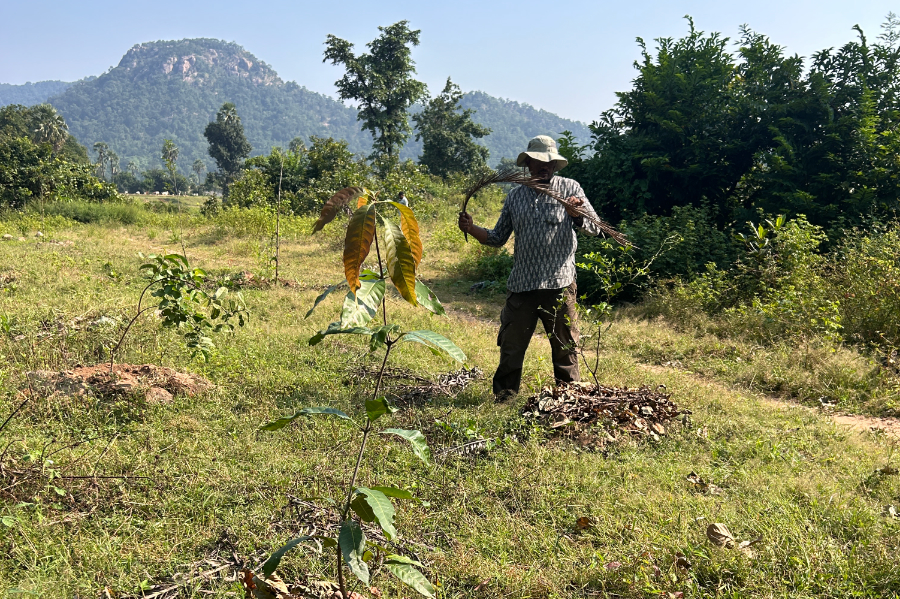
Support species plantation and Mulching: We planted support species of trees, and grasses and sow seeds of deep-rooted species on eroded areas to restore soil structure and build organic matter. Mulching helps retain moisture, suppress weeds, and promote soil biodiversity.
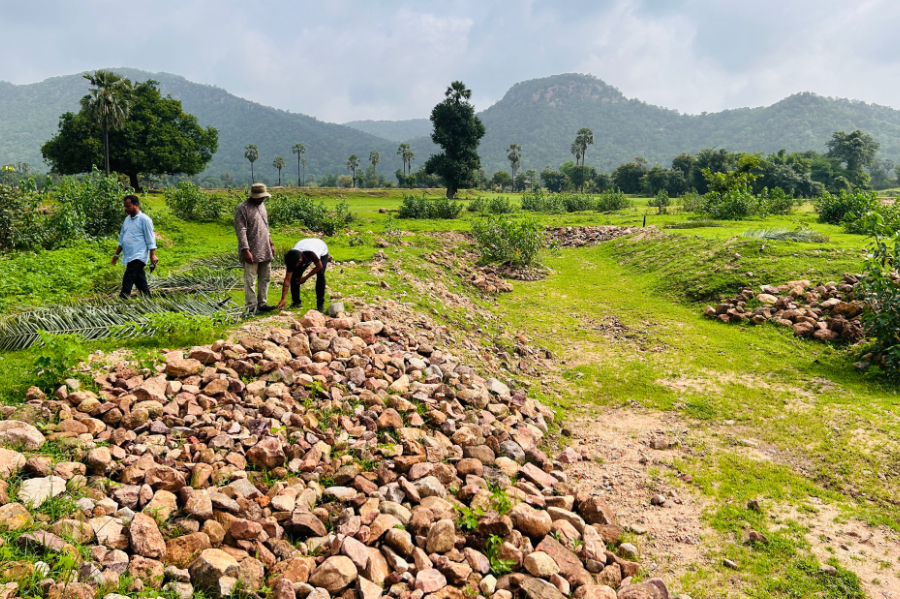
River bed protection plan: we have already sowed seeds and saplings of riparian zone vegetation on the river bank to stop soil erosion. We are covering the entire river bank with stone pitching to slow the river water speed and planted a bamboo groove which was mentioned earlier.
Biodiverse Planting
The food forests and vegetable gardens we have established feature diverse crops that support each other and attract pollinators to ensure resilience. We now have pesticide-free produce from our vegetable garden.
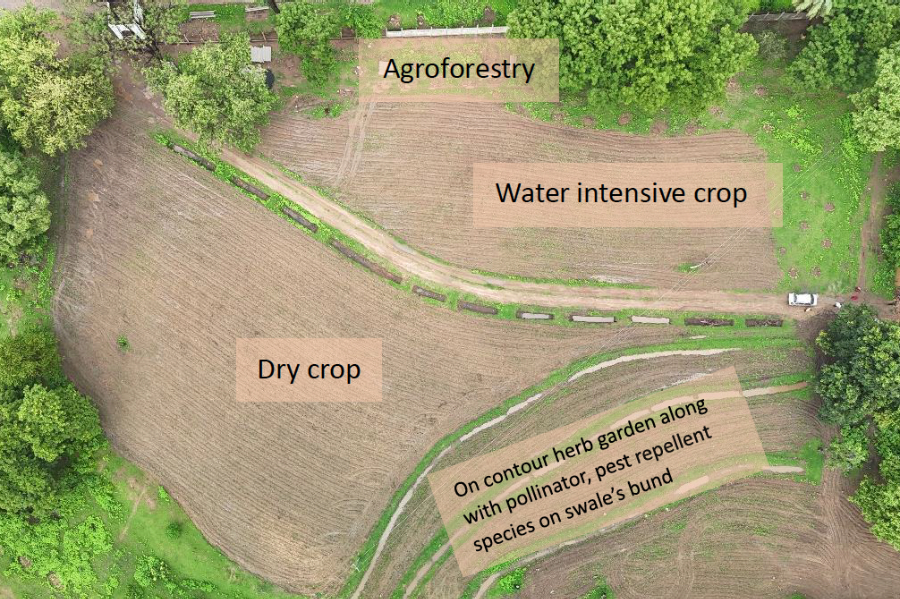
Crop Diversity: Our vegetable gardens include a mix of annual and perennial crops, ensuring harvests throughout the year.
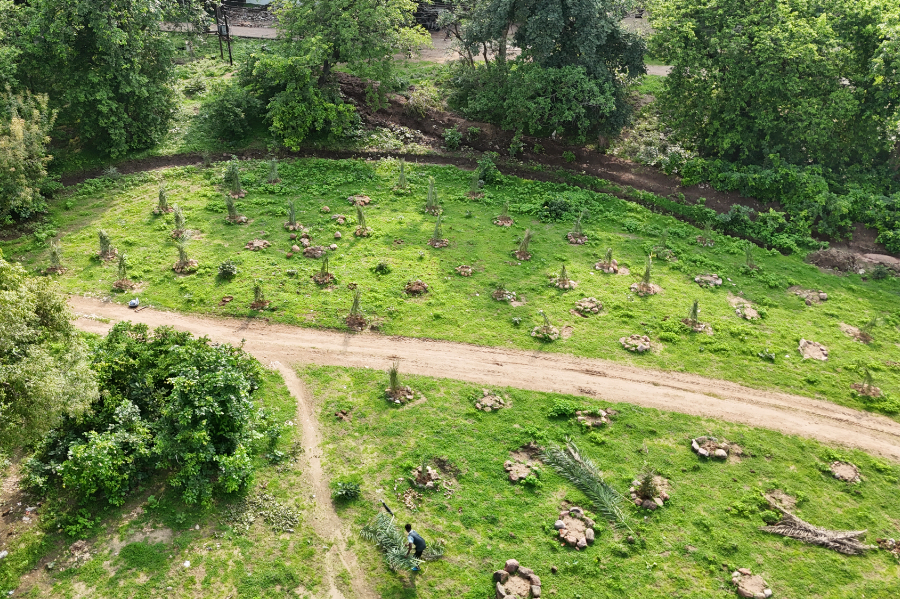
Food Forest: We planted a food forest with fruit and support species (N-fixing), these will be layered with shrubs, herbs, and groundcovers once they start making a canopy.
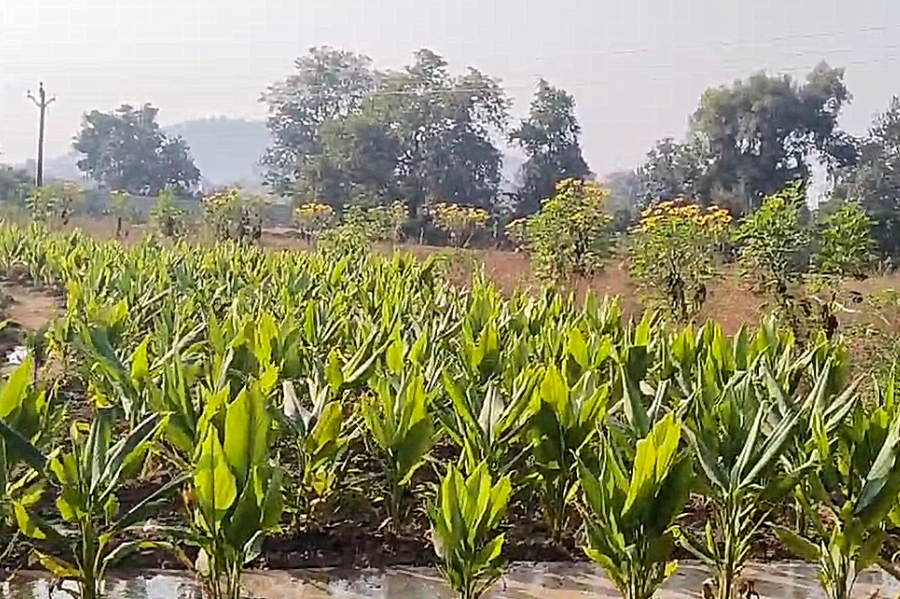
Polyculture Guilds: We are developing plant guilds around trees in our orchard, combining plants that provide mutual benefits (e.g. Turmeric, ginger with lemon grass and Mexican sunflower). Our polyculture approach will improve soil fertility and reduce pest problems without relying on chemical inputs.
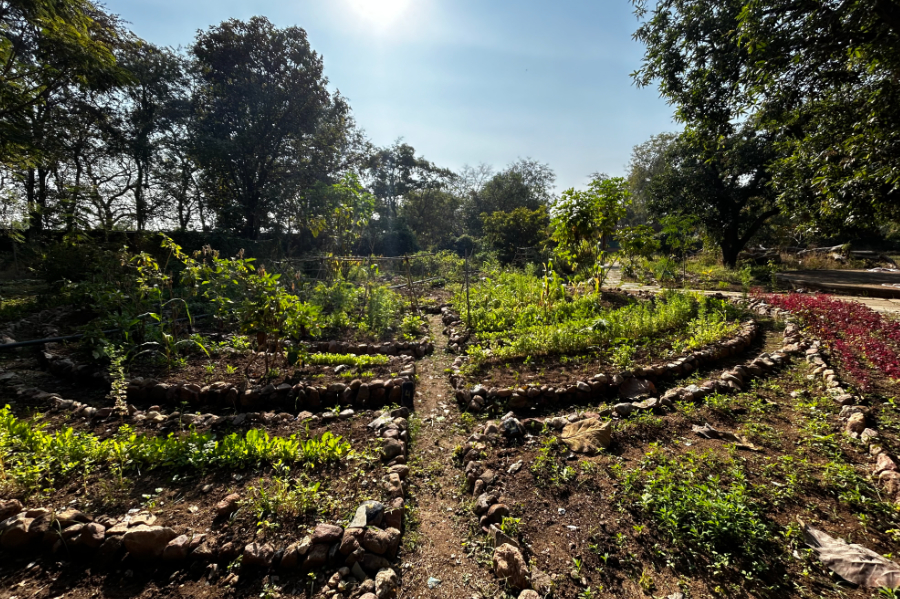
Vegetable Mandala Garden: We created a vegetable mandala garden which produces pesticide-free, organic vegetables and herbs. This method promotes soil health, biodiversity, water efficiency, while creating a variety of produce. It also allows for space efficiency, ease of access and maintenance.
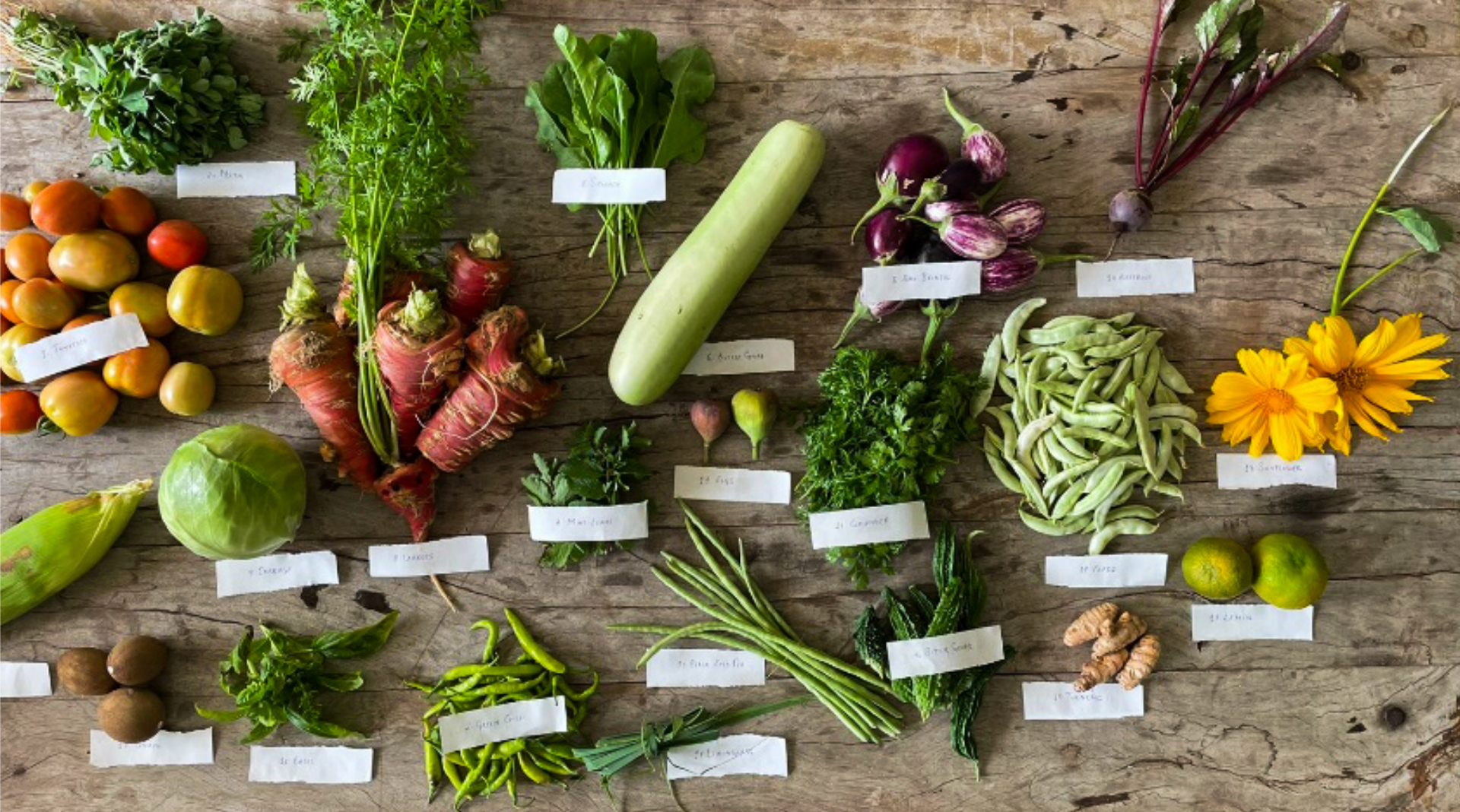
Maintenance and Adaptive Management
Seasonal tasks include pruning, planting, and observation. We make adjustments based on observations and challenges to improve growth and sustain progress.
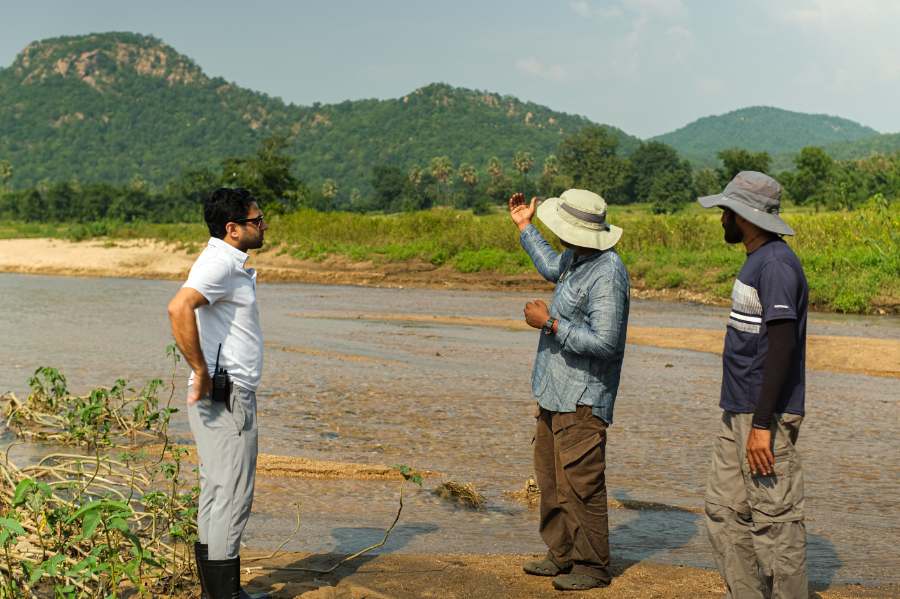
We conduct routine inspections of water systems, plant health, and soil conditions. We carry out seasonal activities such as pruning, mulching, planting, and cover-cropping to maintain and improve our farm’s productivity.
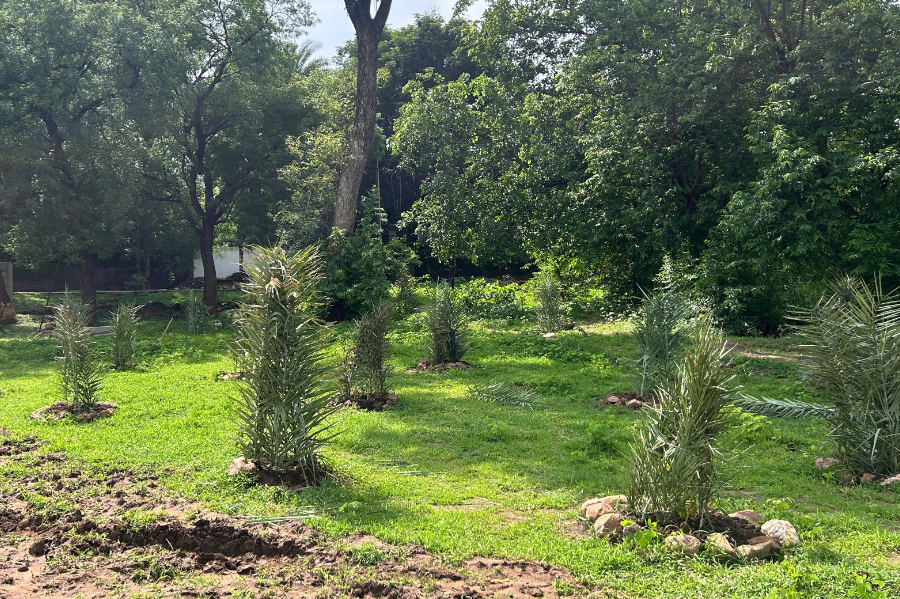
Adaptive management means adjusting practices and strategies as needed. For instance, we recently added additional stone bunds near saplings after noticing plant stress during river flow.
The next three phases of our project will be focused on –
We want to introduce rotational grazing, beekeeping, and poultry for ecosystem balance.
Renewable Energy
We want to install solar panels, compost toilets and begin the strategic placement of barns, sheds and greenhouses.
Community Engagement
We plan to start workshops and tours for those interested in permaculture and regenerative agriculture, institute volunteer programs for those who want to learn and contribute, and initiate knowledge-sharing activities with neighbours and the wider community.
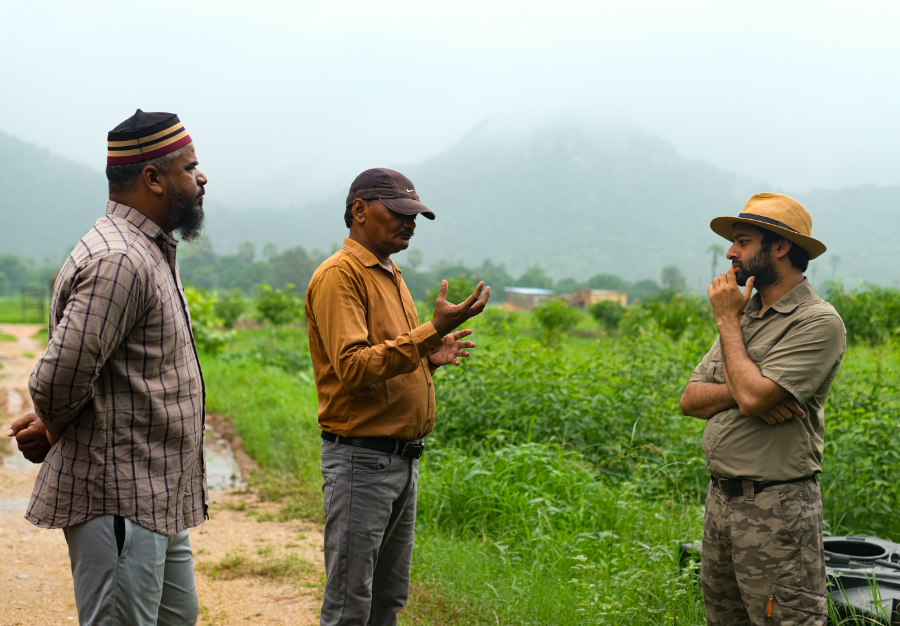
Join the movement!
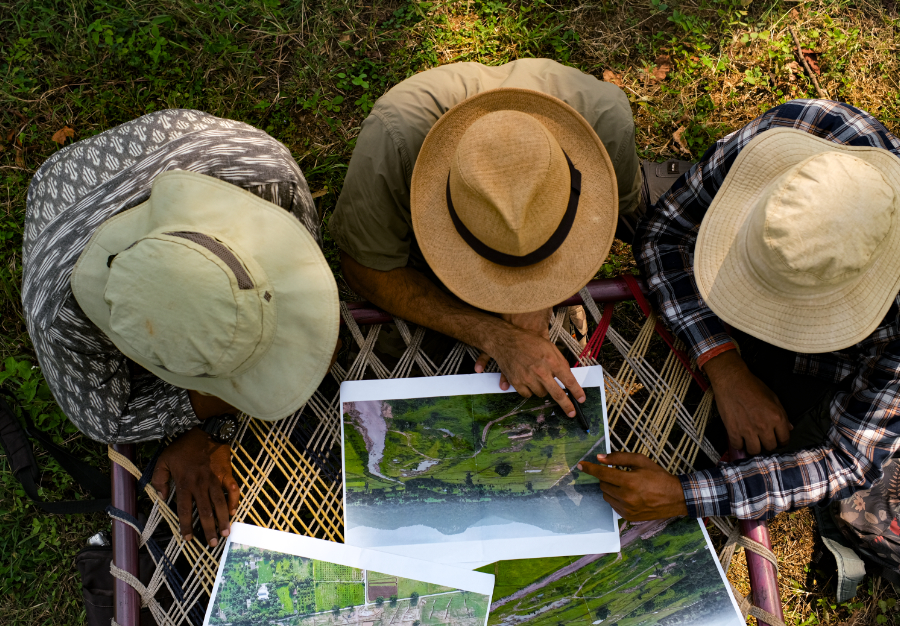
We have demonstrated what is possible, converting skeptics along the way. The farmers of Kathiwada are able to see how regenerative methods can be both practical and profitable. In the long term, this campus will become a hub for learning and inspiration drawing students, academics, NGOs and volunteers from across the region and the nation.
Your support helps us expand this vital work. Together, we can inspire a movement toward sustainability and leave a lasting legacy for generations to come.